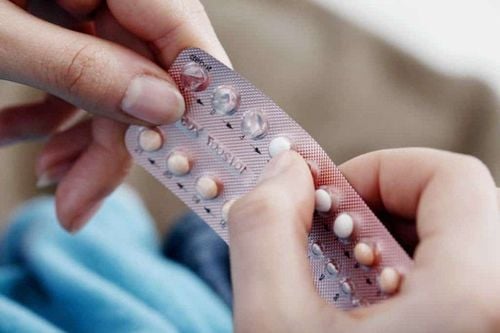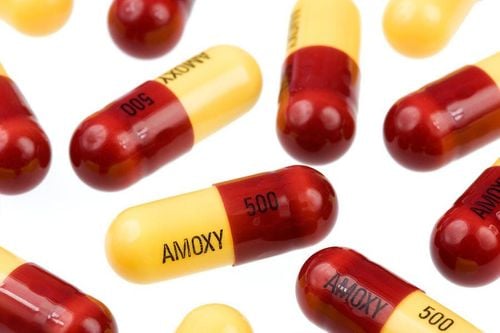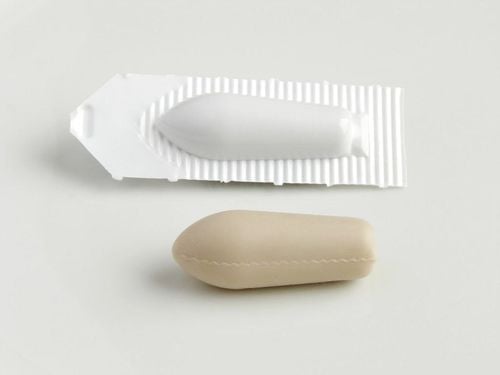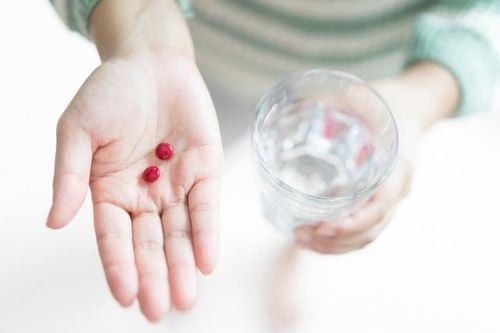Insulin Mixtard is an injectable suspension used to treat diabetes. Insulin Mixtard works quite quickly, within 30 minutes of injection, it can lower blood sugar even more, patients using Insulin Mixtard may have to inject the drug regularly at home. Therefore, it is necessary to keep the notes in mind when using the drug to avoid unwanted effects that occur during the use of insulin mixtard.
1. What is Insulin Mixtard?
Insulin Mixtard is an injectable suspension containing the active ingredient of human insulin. The drug is available in the form of vials, boxes (Penfill) or pre-filled injection pens (InnoLet or FlexPen). Mixtard insulin contains both rapid-acting insulin (soluble insulin) and long-acting insulin (isophane insulin) including:
- Insulin Mixtard 30 contains 30% soluble insulin and 70% isophane insulin
- Insulin Mixtard 40 contains 40% soluble insulin and 60% isophane insulin
- Insulin Mixtard 50 contains 50% soluble insulin and 50% isophane insulin
2. How does Insulin Mixtard work?
Diabetes is a disease in which the body does not produce enough insulin to control blood sugar levels or when the body cannot use insulin effectively. Insulin Mixtard is a replacement insulin that is very similar to the insulin produced by the pancreas.
The active ingredient in Mixtard is human insulin, produced using a method known as “recombinant technology”: the insulin is produced by yeast cells that have been inserted with genetic (DNA) segments that enable them to produce insulin. Mixtard Insulin contains two forms of insulin: a soluble form, which works quickly (within 30 minutes of injection) and an “isophane” form, which is absorbed much more slowly and lasts all day. This gives Mixtard Insulin a longer duration of action. The analogue insulin works similarly to naturally produced insulin and helps glucose enter the cells from the blood. By controlling blood glucose, the symptoms and complications of diabetes are reduced.
3. What is Mixtard Insulin used for?
You can use Insulin Mixtard in the following cases:
- Type 1 diabetes (insulin-dependent)
- Type 2 diabetes
- After oral medication, and lifestyle changes have not achieved the treatment goal
- (bringing HbA1C to 6.5-7.0% in 3 months.)
- Emergency treatment for pre-coma and diabetic coma patients
- Severe weight loss, malnutrition, with infections.
- Preparing for surgery, during surgery.
- Having severe complications such as severe liver failure, severe kidney failure, myocardial infarction, retinopathy, severe cardiovascular disease.
- Gestational diabetes.
4. In which cases should Insulin Mixtard not be used?
You should not use Insulin Mixtard if:
- You have a history of allergy or hypersensitivity to any of the ingredients of Insulin Mixtard
- You have low blood sugar
- Have kidney problems or kidney failure
- Low or decreased blood potassium
Other health problems may affect the way Mixtard works. Therefore, you should inform your doctor about your history of allergies and health conditions to consider using the drug.
4. How to use Insulin Mixtard?
Mixtard is injected under the skin, into the thigh, abdominal wall (in front of the waist), buttocks or deltoid muscle in the shoulder. The injection site should be changed each time to reduce the risk of lipodystrophy. Your blood sugar should be checked regularly to find the lowest effective dose.
The usual daily dose is 0.3 to 1.0 international units (IU) per kg of body weight.
Insulin Mixtard is taken 30 minutes before meals. The medication may be used once or twice a day. However, it is usually given once or twice a day. In addition, your doctor may instruct you on other ways to use the medication depending on your age, health condition, and specific symptoms to best maximize the effectiveness of the medication and avoid possible risks.
5. What should you pay attention to when using Insulin Mixtard?
- Remember that Insulin Mixtard is a drug that can only be used with a doctor's prescription. Read the instructions carefully before using the drug, if you have any questions, consult your doctor.
- Regularly check your blood sugar while using Insulin Mixtard to avoid hypoglycemia. Symptoms of hypoglycemia include: feeling hungry, tired, sweating, shaking hands, palpitations, coma, etc.
- Use the drug according to the prescribed dose, do not stop taking the drug on your own, especially with type 1 diabetes because this can cause hyperglycemia. Symptoms of hyperglycemia such as thirst, nausea, vomiting, dry skin, dry mouth, fruity breath can appear slowly, lasting from a few hours to a few days and can lead to death.
- There are no restrictions on the use of Insulin Mixtard for pregnant women, but you should still consult a specialist before using the drug. Some special notes when using Insulin Mixtard in pregnant and lactating women are as follows:
- The process of injecting insulin for pregnant women requires careful guidance and monitoring. Pregnant women will use a home blood glucose monitoring kit to monitor and record blood sugar 4 times a day.
- Record the specific value of insulin units used in each injection and the total daily dose. The need for insulin for pregnant women will increase with gestational age.
- A non-stress test is performed around the 32nd week of pregnancy to check for signs that the fetus is receiving enough blood through the placenta.
- Regular ultrasounds are performed to check the growth rate of the fetus.
Using Insulin Mixtard in lactating women does not pose any risks to the mother or baby, but dosage adjustments are required for both.
If you are doing activities such as driving or operating machinery your concentration may be affected by hypoglycaemia so take precautions to avoid this while at work, stop what you are doing immediately and stay in a place where you can call for help if needed.
Consult your doctor before traveling to a time zone, as you will need to inject insulin and eat meals at different times.
Excessive and irregular exercise without changing your carbohydrate intake can cause hypoglycemia many hours after exercise, instead exercise regularly and as directed by your doctor.
Be careful when drinking alcoholic beverages as they can cause your blood sugar to drop and affect the effectiveness of medications.
Inform family and friends about the symptoms of hypoglycemia so they can help you if you experience it.
Do not use if Insulin Mixtard shows signs of deterioration, discoloration or expiration.
6. What risks can Mixtard Insulin cause?
The most common side effect of Mixtard insulin is hypoglycemia and some other side effects during the use of the drug such as:
- Itching
- Rash
- Redness
- Hardness
- Urticaria
- Atrophy/hypertrophy of fat tissue
- Anaphylactic reaction
The above information does not include all the side effects of Insulin Mixtard, you may experience other effects, if there is any abnormality during the use of the drug that makes you worried, please contact your doctor.
7. Some drugs to note when using with insulin mixtard
Some drugs may reduce your insulin needs:
- Oral diabetes medications
- Monoamine oxidase inhibitors (MAOIs)
- Non-selective beta blockers
- Angiotensin-converting enzyme (ACE) inhibitors
- Salicylates
- Anabolic steroids
Some substances may increase your insulin needs:
- Oral contraceptives
- Thiazides
- Glucocorticoids
- Thyroid hormones
- Growth hormones
According to experts, Insulin Mixtard should be kept in the refrigerator (2°C - 8°C). Keep the medicine away from the refrigerator and do not freeze. Keep Insulin Mixtard away from excessive heat or light. When using the medicine, the shelf life is 5 weeks when stored below 30°C or 6 weeks when stored below 25°C. Do not refrigerate after the first opening or carry a spare.
To arrange an appointment, please call HOTLINE or make your reservation directly HERE. You may also download the MyVinmec app to schedule appointments faster and manage your reservations more conveniently.













